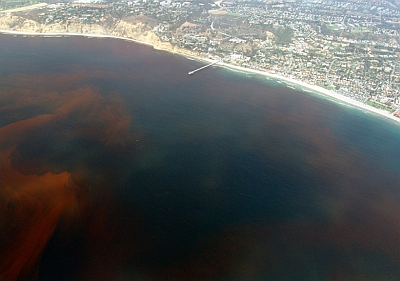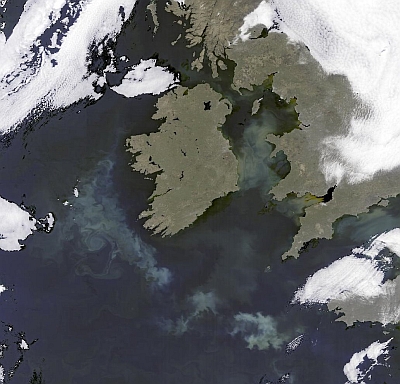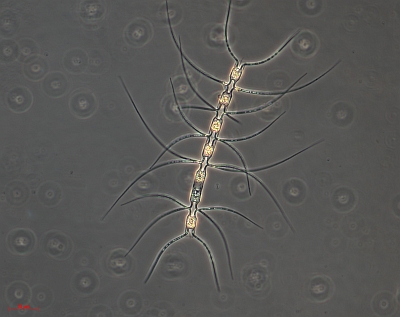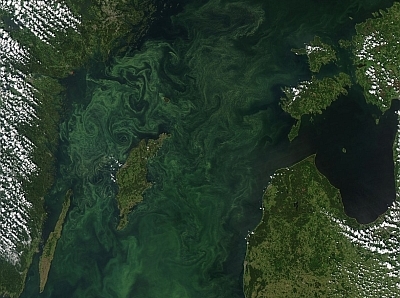Ergänzung 3.4: Schädliche Algen
Es gibt vier Hauptgruppen von Algen, die schädliche Algenblüten (Harmful Algal Blooms - HABs) bilden:
Flagellaten (Dinoflagelatten eingschlossen), Diatomeen, Blaualgen, und Coccolithophoren. Ihre Konzentration kann stark schwanken: Eine Blüte kann aus 200 oder 2 Millionen Algenzellen pro Liter Meerwasser bestehen. It could even be an increased concentration of algal cells that are attached to the substrate, like a blade of seagrass or a piece of seaweed.
1. Flagellaten / Dinoflagellaten
Flagellaten sind einzellige Organismen, die normalerweise organic walls(=Zellwände??) besitzen. Sie bewegen sich mit Hilfe von peitschenartigen Anhängen fort und können sich in der Wassersäule auf und ab bewegen, wobei sie 15 bis 20 Meter an einem Tag zurücklegen können.
Dinoflagellaten machen schätzungsweise einen Anteil von 70% aller HAB-Arten aus. Sie können in Konzentrationen von über einer Million Zellen pro Milliliter blühen. Viele dieser Organismen enthalten farbige Pigmente, weshalb das Wasser zum Zeitpunkt der Blüte farbig erscheint. Aufgrund deiser Beobachtung werden auch z.B. die Begriffe "Rote Flut" oder "Brauna Flut" verwendet. Es gibt jedoch auch farblose Arten von Dinoflagellaten.

Foto: Alejandro Díaz / Wikimedia Commons
2. Diatomeen
Diatomeen are unicellular algae but the yalso occur attached in chains. Their cell walls are composed of silica, a glass-like material, which comprises a shell-like structure. Diatoms can float at the water's surface or sink to the depths of the ocean.
3. Blaualgen Blue-green algae
Blue-green algae (also called Cyanobacteria) are among the oldest types of bacteria found on Earth and are believed to have played a major role in the addition of oxygen to the Earth's early atmosphere. Up until today they are a significant component of the marine nitrogen cycle.
Cyanobakterien still have plant pigments like other algae but do not have the internal microstructure like that of the diatoms and flagellates. Individual cells, filaments, or colonies often float at the sea surface and generally appear blue-green in color.
4. Coccolithophores
Coccolithophores are single-celled algae covered with calcium carbonate plates called coccoliths. The coccoliths give the ocean a milky white or turquoise appearance during intense blooms. The long-term flux of coccoliths to the ocean floor is the main process responsible for the formation of chalk and limestone.

Source: ESA

